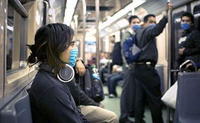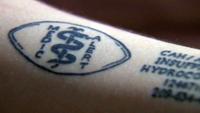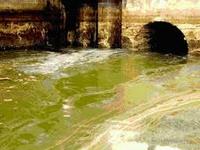-
Hydrogen peroxide vapor kill superbugs dead
Infection control experts at the Johns Hopkins Hospital have found that a combination of robot-like devices that disperse a bleaching agent into the air and then detoxify the disinfecting chemical are highly effective at killing and preventing the spread of multiple-drug-resistant bacteria, or so-called hospital superbugs
-
-
New methods might drastically reduce the costs of investigating polluted sites
In Europe there are over 20,000 complex and large contaminated areas. These so-called megasites threaten scarce land and water resources, create environmental and health risks, and result in economic and social costs; new methods may allow polluted sites to be investigated and monitored long term at significantly reduced costs
-
-
Health consequences of the Fukushima disaster
The results of two studies in the 15 August issue of JAMA report on the psychological status of workers at the Fukushima nuclear power plants in Japan several months after the earthquake and tsunami in March 2011, and the amount of internal radiation exposure among residents of a city north of the power plant that experienced a meltdown
-
-
Police officers need sleep for health, performance
Forget bad guys and gunfire: Being a police officer can be hazardous to your health in other ways; a news study found that officers working the evening or night shifts were fourteen times more likely to get less restful sleep than day-shift officers, and also were subjected to more back-to-back shifts, exacerbating their sleep deficit – and that police officers who sleep fewer than six hours per night are more susceptible to a variety of health problems
-
-
Measuring the uncertainties of pandemic influenza

Researchers have highlighted three factors that could ultimately determine whether an outbreak of influenza becomes a serious epidemic that threatens national health; the research suggests that the numbers in current response plans could be out by a factor of two or more depending on the characteristics of the particular pandemic influenza
-
-
Paper-printed rapid disease detection test
Complex laboratory investigations do produce reliable results, but they are not useful for point-of-care diagnostics; researchers have come up with a clever idea: biosensors based on paper; the test is printed on one side of a chromatography paper, the paper is folded up origami-style, laminated, and the test is ready; test evaluation requires only a voltmeter
-
-
Better cybersecurity for the healthcare industry
Healthcare organizations face ever more threatening cyber attacks. In response, the Health Information Trust Alliance (HITRUST) has established the HITRUST Cybersecurity Incident Response and Coordination Center to provide support for the healthcare industry
-
-
More than half of all cancer is preventable
Public health researchers outline obstacles standing in the way of cancer prevention; ore than half of all cancer is preventable, and society has the knowledge to act on this information today
-
-
Medical tattoos – a growing trend

Forget medical bracelets, a growing number of individuals with special medical needs have taken to tattooing their bodies to warn first responders about critical medical conditions; medical bracelets commonly list a person’s allergies, chronic diseases, and end-of-life wishes, but more and more people have started tattooing that information on their bodies
-
-
Hospital fountains a dangerous source of bacterial outbreaks

A recent study conducted by researchers at the Wisconsin Division of Public Health found that fountains in health care facilities can actually be a dangerous source of air-borne bacterial diseases; “Fountains and health-care facilities don’t mix,” said Thomas Haupt, a respiratory diseases epidemiologist and the study’s lead author
-
-
Rethinking the toilet model in developing countries

More than 2.6 billion people around the world lack access to basic sanitation, and more than 40 percent of the world’s population lack access to even the simplest latrine; the lack of sanitation creates serious problems, including environmental pollution, unsafe surroundings, and increasing the outbreak of lethal epidemic diseases such as cholera; Swedish company offers a solution
-
-
Public health expert: budget cuts will erode response capabilities
Homeland Security NewsWire’s executive editor Eugene K. Chow recently got the opportunity to speak with Dr. John R. Finnegan, the dean of the University of Minnesota School of Public Health; in their interview, Dr. Finnegan discusses the devastating effects of proposed budget cuts on the U.S. public health system, why it was a wise decision to censor the release of H5N1 flu research; and the creation of a medical reserve corps at universities
-
-
New wireless sensor quickly detects E. coli in water samples
Fecal contamination of public beaches caused by sewage overflow is both dangerous for swimmers and costly for state and local economies; current methods to detect E.coli, a bacterium highly indicative of the presence of fecal matter in water, typically require 24-48 hours to produce a result; new detection method cuts this time to 1-8 hours
-
-
Listeriosis outbreak causes 29 deaths, costs producer $150 million
Four outbreak strains of L. monocytogenes, the bacterium that causes listeriosis, were found in twenty-six states, leading to twenty-nine deaths and thirty-three additional illnesses; settlements to the families may cost $150 million; an investigation by the FDA and CDC identify a Colorado cantaloupe producer as the source of the outbreak
-
-
Millions of yet-to-be-described viruses found in raw sewage

There are roughly 1.8 million species of organisms on planet Earth, and each one is host to untold numbers of unique viruses, but only about 3,000 have been identified to date; a new study reveals a vast world of unseen viral diversity that exists right under our nose — in ordinary raw sewage, to be precise
-
- All
- Regional
- Water
- Biometrics
- Borders/Immig
- Business
- Cybersecurity
- Detection
- Disasters
- Government
- Infrastructure
- International
- Public health
- Public Safety
- Communication interoperabillity
- Emergency services
- Emergency medical services
- Fire
- First response
- IEDs
- Law Enforcement
- Law Enforcement Technology
- Military technology
- Nonlethal weapons
- Nuclear weapons
- Personal protection equipment
- Police
- Notification /alert systems
- Situational awareness
- Weapons systems
- Sci-Tech
- Sector Reports
- Surveillance
- Transportation
Advertising & Marketing: advertise@newswirepubs.com
Editorial: editor@newswirepubs.com
General: info@newswirepubs.com
2010-2011 © News Wire Publications, LLC News Wire Publications, LLC
220 Old Country Road | Suite 200 | Mineola | New York | 11501
Permissions and Policies
Editorial: editor@newswirepubs.com
General: info@newswirepubs.com
2010-2011 © News Wire Publications, LLC News Wire Publications, LLC
220 Old Country Road | Suite 200 | Mineola | New York | 11501
Permissions and Policies
